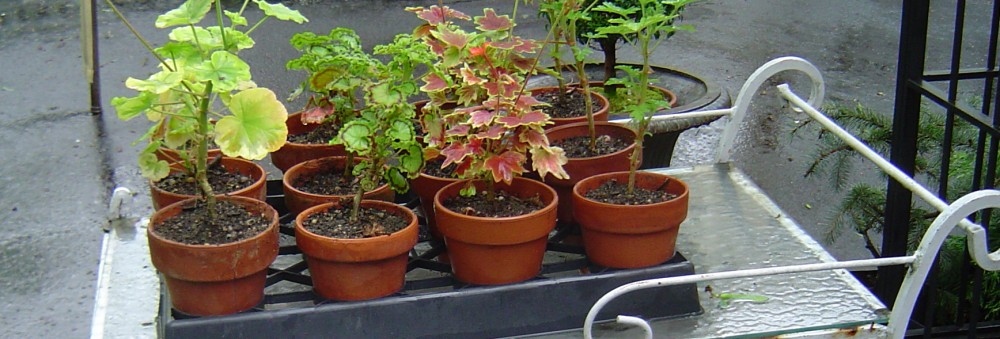In a year rife with crises and challenges, it’s been a struggle to be positive. As I’ve said all along, the garden has singularly kept me hopeful and sane. It is impossible to tend a garden without the trust that tomorrow will be better.
With unexpected time on hand, I’ve been able to contemplate parts of the garden that are being underutilized and need work. These are not necessarily new observations but ones that have been ignored or put off due to lack of time or motivation. This year, the excuses stopped working.
Two areas needed to be addressed and I’ve called them Projects Positive – they move the garden in the right direction and align even more with my values about the environment and sustainability.
The first area needing attention was the very back of the lower garden where the ‘meadow’ dominates. This roughly 7×40 foot space along the property line buffers the meadow from the woods. Over the years, I’d added some native shrubs and an Amalanchier tree but it remained inconsequential. It had no real role to play. To make it worse, the groundcover was pachysandra that had been there for decades and was therefore very thickly established. The very thought of getting it all out had been the reason I let it remain. Until this year.
With Open Day canceled, I was at liberty to tackle spring work that typically would’ve interfered with getting the garden ‘visitor ready’. So, out went the pachysandra. That was really hard work – the growth was tight and thick and the roots ran deep. I had to get the able help of Ephraim our occasional garden assistant.
Following the pachysandra purge, layers of paper and cardboard ( recycling hack) were put down to smother any pachysandra still lurking around. The paper will eventually breakdown and supplement the soil. Over the paper, we laid down landscape fabric to act as a further deterrent.
Pachysandra can be persistent. I’m certain bit and pieces of root remain and will put out growth so vigilance is called for – pull out as soon as they poke out.
Native Chrysogonum virginianum was planted to replace the pachysandra. It seemed like the correct choice of groundcover for this shady area. The yellow flowers should brighten the area next growing season. I’ve also added to the oakleaf hydrangea, Solomon’s seal, bleeding hearts, ferns and dogwood shrubs with several Fothergilla and Ceonothum. In time, the shrubs will grow, fill out the bed to seamlessly join the meadow and provide what I imagine will be a lovely visual tapestry of shapes, hues and texture. Not only will all the plantings attract the native pollinators, Fothergilla flowers have a fragrance which I believe will invite a person (mostly me) to pause a bit at the conveniently provided stone bench and enjoy the garden from this perspective. I want every bit of the garden to matter.
Having completed the plantings, pine bark mulch was spread all over the ground to conceal the black fabric and to keep moisture in. This latter point is important as the ground can get very dry very quickly.
The second project is also in the lower garden. On either side of the path to the greenhouse, there are good sized patches that I’d left without any deliberate plantings. Over the years, they would put on a brilliant spring show of forget-me-nots, dandelions and violas. A beautiful mix of blue, yellow and white. However once that show was over, they become areas of shabbiness. Not wild and engaging. Just messy and unattractive.
I’ve taken my time trying to figure out what to do – something that was different and yet segue ways smoothly into the meadow. This past weekend, after clearing the two areas, 350 plugs of Carex appalachia have been were planted in one and later this week, 450 more will go into the other. The native sedges will be low enough so as to never block the meadow plantings beyond. They will look natural and provide movement. In addition, several types of native butterflies will welcome the presence of their favored food.
A large number of Fritillaria meleagris has been ordered to augment these areas. In my minds eye, I can see the plum colored, checkered flowers bobbing happily over the sedges in the spring. And when the vernal sun casts its gaze, the whole ‘field’ will look ethereal. A fantasy.
Now you see why gardening is full of optimism? It gives us permission to dream.
May all our projects in life be positive.
Note: If, like me, you too have been deeply saddened by the passing of our beloved Notorious RBG, then you must want to continue her work in uplifting people and making matters equal for all. When I elected to support the ACLU by donating 50% of the profits from the Printed Garden products, it was because of RBG’s work with that organization. I make a fervent appeal to each of you to please join me in carrying on her legacy. Because,’We the people’ should include every single individual.
Project 1:
Project 2: Observe how it all looks pretty in the spring but by early summer (photo 3), the area in the right foreground looks blah.
(c) 2020 Shobha Vanchiswar
[do_widget “Blog Subscriptions (Jetpack)”]
















































































































